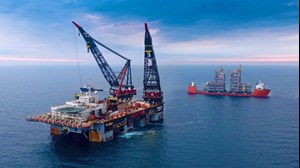Equinor reduces estimated investments in Norway by some NOK 30 billion

NORWAY -- Equinor has reduced the estimated investments for operated projects in the development phase on the Norwegian continental shelf by some NOK 30 billion ($3.6 billion) since the development plans were submitted to Norwegian authorities.
This appears from the status for Norwegian projects under development published the Government’s national budget proposal for 2019.
“We have successfully reduced the investment estimates by approximately NOK 30 billion since submitting the PDOs to the authorities. The improvements have been achieved in close collaboration with our partners and suppliers, and are mainly a result of increased drilling efficiency, simplification and high-quality project implementation. These figures also include the market effect we have achieved by counter-cyclical investments,” says Margareth Øvrum, Equinor’s executive V.P. for technology, projects and drilling.
Adjusting for the currency effects of a weak NOK, the reduction of investments for the portfolio is substantially bigger.
Taking over the operatorship for the Martin Linge project in March 2018 Equinor has conducted a thorough review of the project, establishing a plan for safe start-up. Based on estimates of the remaining work at Martin Linge start-up is scheduled for the 1st quarter of 2020. The updated investment estimate totals NOK 47.1 billion ($5.68 billion).
The investment estimate for Martin Linge has increased by NOK 3.6 billion ($430 million) since last reporting based on Equinor’s assessment of the remaining scope of work. In addition, the change of operatorship has necessitated an accounting change for the project of NOK 1.35 billion ($160 million). This applies to charter rates for storage vessels and historical drilling rig rates.
“When we acquired the stakes in the Martin Linge field and took over the operatorship, we allowed for any remaining work and increased costs. As announced, we have therefore spent time at the Rosenberg yard to get an overview of this. After successful platform installation the focus is now to ensure high-quality completion of the project, and safe start-up of the field,” says Øvrum.


